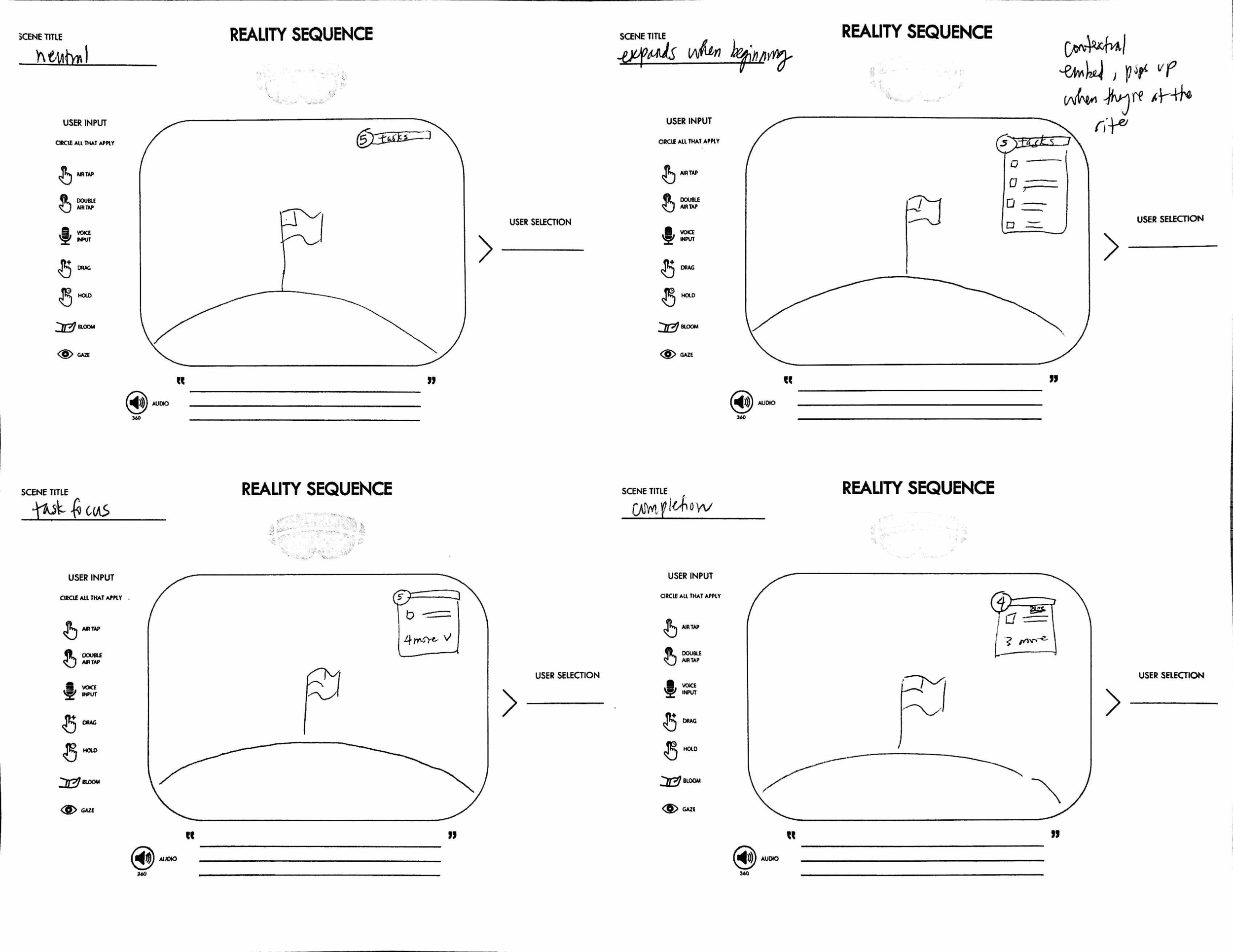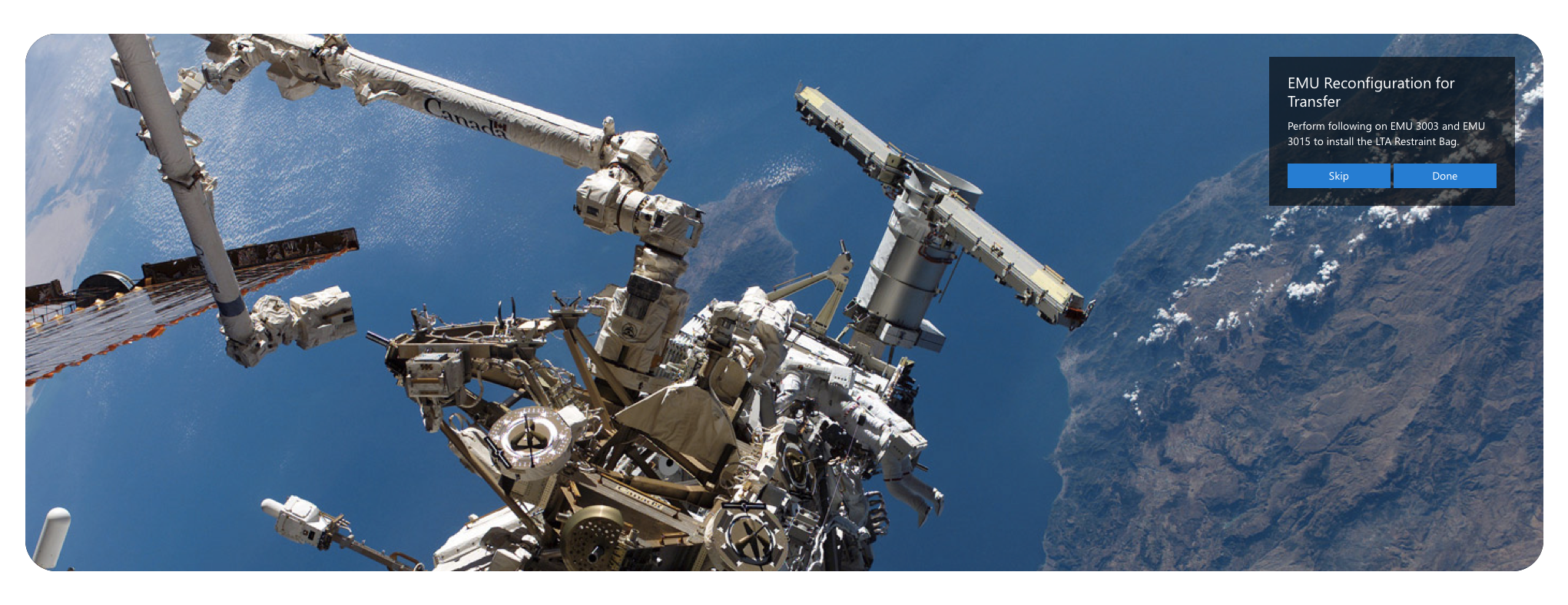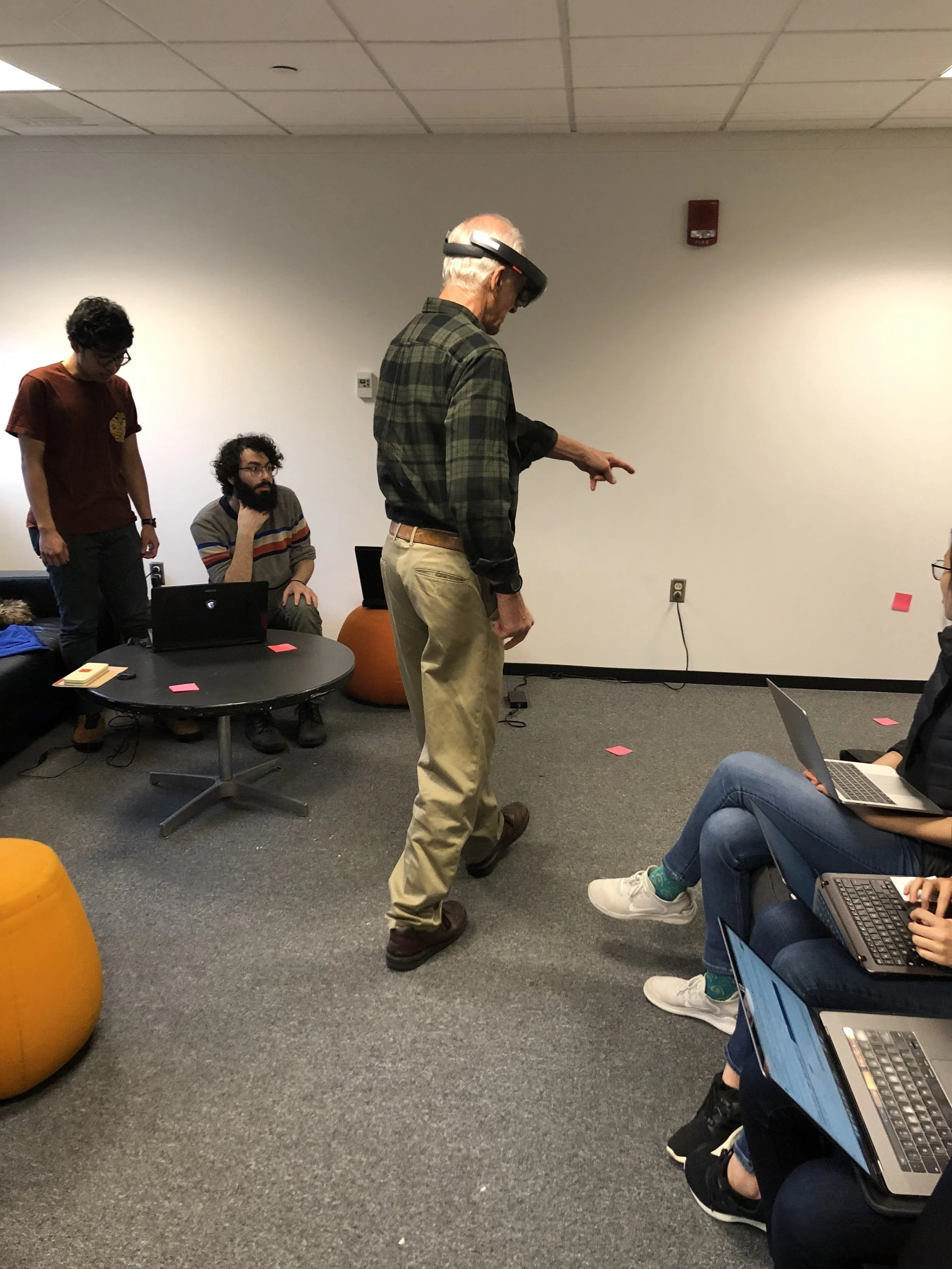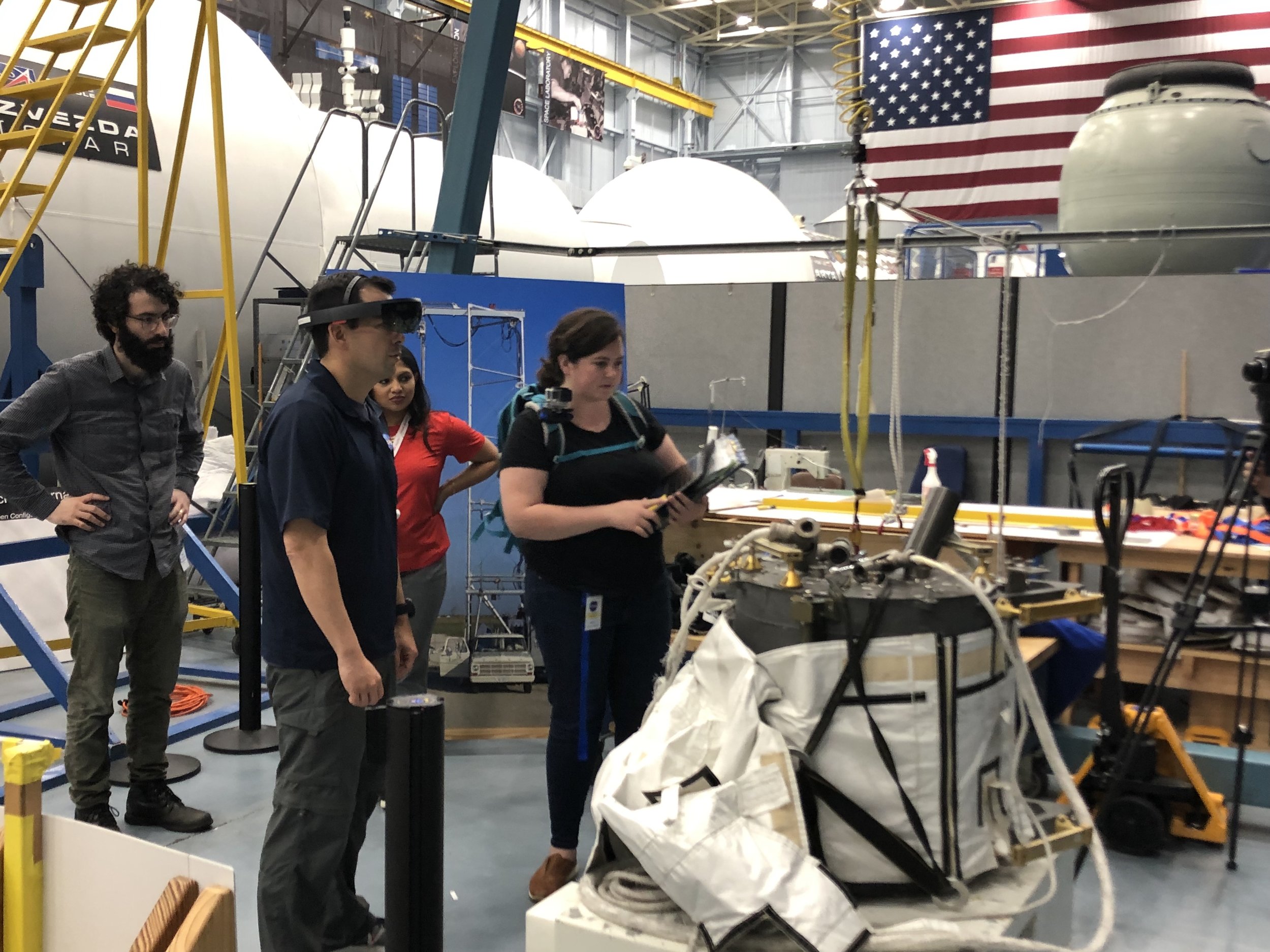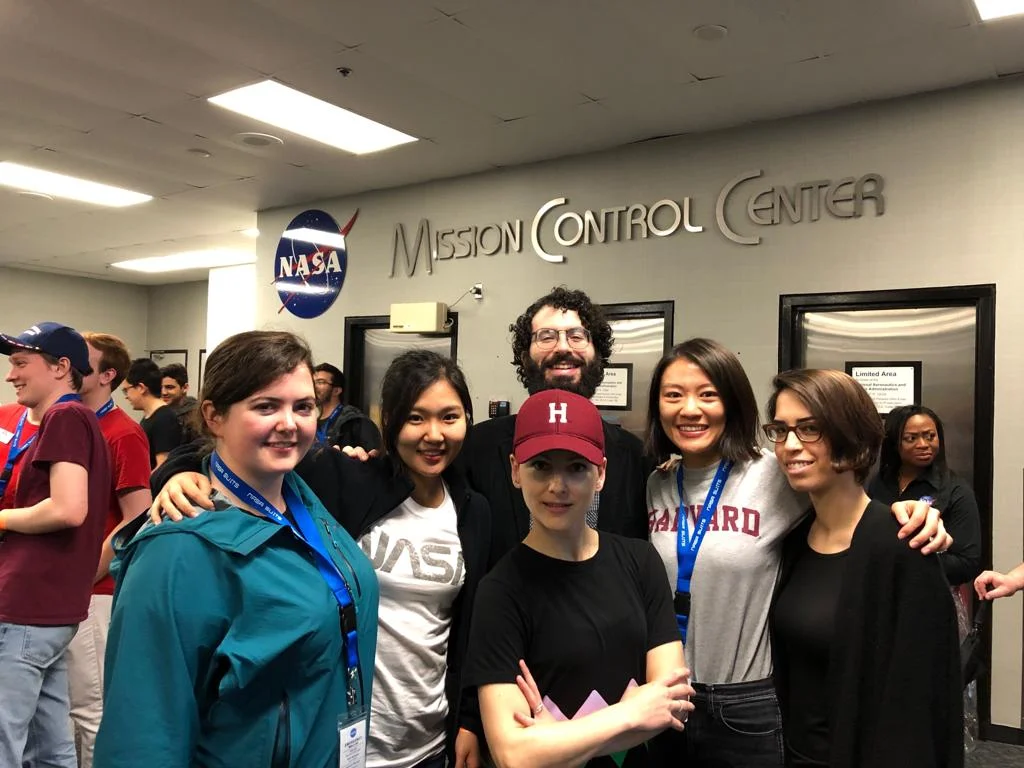Designing for Safety & Efficiency in Space
2019, NASA SUITS
Project Type: Research, User Testing, Interaction Design
PROJECT OVERVIEW
The NASA SUITS Challenge tasked us with the question: how might use mixed reality to maximize safety and efficiency in space?
The Harvard NASA Suits team comprised of 12 Harvard graduate students across the Design and Engineering Schools. After submitting an initial proposal in October, we were invited to test and present our prototype at the NASA Houston Space Center in April.
My role on the team was to design the task list experience. I worked with fellow designers and developers.
Background (BRIEF Provided by NASA)
During a spacewalk, an astronaut’s job involves focus, direction, and communication. Currently, an extravehicular activity (EVA) crewmember communicates details about all tasks by means of a voice connection with mission control, an EVA partner, and an intravehicular (IVA) crewmember (an astronaut inside the pressurized spacecraft). For years, voice has been the only means of communicating during a spacewalk. However, NASA is developing helmet-based displays which can perform this function much more efficiently, leading to less voice conversation, and a more efficient system. These displays fall under the Informatics Subsystem of NASA’s Advanced Spacesuit.
ASSUMPTIONS (PROVIDED BY NASA)
Astronaut is wearing spacesuit, conducting extravehicular activity (EVA, activity done outside a spacecraft).
The astronaut will not have had extensive training on the task
There will be a specified communication latency between mission control and the astronaut
Spacesuit anomalies can arise at any time during the EVA
Lighting conditions can change during the completion of the task
The astronaut will wear EVA like gloves but will have no other restrictions
TOOLS USED:
Microsoft HoloLens
Sketch3
Unity
Source: NASA
A potentially deadly spacesuit water leak that nearly drowned an Italian astronaut during a spacewalk last July was one of the scariest close calls in NASA's spacewalk history. (NASA, 2013).
In 2013, Luca Parmitano’s spacesuit began to leak, “filling with water just after venturing outside of the space station on July 16. Eventually, the water filled his eyes, ears, nose and part of his mouth, making it difficult to breathe.”
The water covered Parmitano’s face and prevented him from being able to hear and communicate. He was luckily able to rely on his memory to get back to the airlock.
“While the spacewalk was expected to last about 6.5 hours, Mission Controllers aborted the space excursion about one hour into it. Once back inside the airlock, Parmitano and the other space station crew members found that about 1.5 liters of water filled the helmet.”
Source: Spacesuit Leak That Nearly Drowned Astronaut Could Have Been Avoided
Initial sketch of task list from a team design workshop.
Task list is shown as:
Minimized, with number of tasks left incomplete
Expanded task list
Form to mark task as complete
Task list after item is market as complete
INITIAL PROTOTYPE (TASK LIST)
Sketch of what the task list experience would look like with the helmet on. User would be prompted with a small task card.
If user wanted more information, they would gesture with a “tap” to see more information. Button options are “skip” and “done.”
USER TESTING
Jeff Hoffman is an American astronaut and professor at MIT. We invited him to Harvard to test our augmented reality experience. His feedback on the task list was:
“The level of detail for each task is enough, but it would be easier to read as bullet points.”
“It should be quick prompts unless I need more.”
“I want to be able to turn it off if I don’t need help [with the task].”
CURRENT PROTOTYPE
Using Jeff Hoffman’s feedback, we updated the prototype to reflect voice commands as well as gestures and made content more “bite-sized” and readable.
TESTING AT HOUSTON NASA SPACE CENTER
Our final Hololens augmented reality prototype included my task list feature, biometrics and spacesuit stats.
Testing with NASA employees and astronauts in training.
At NASA, we were able to user test in the Houston NASA Space Center. We user tested with NASA employees and astronauts in training. For our user test, we presented the user with a new task and asked them to rely on the augmented reality experience to guide them through the procedure. Our user test was successful and the user was able to successfully and efficiently complete the task.
CONCLUSION
We presented our final prototype to NASA executives and received incredible recognition for our work. We delivered our documentation to them afterwards.
I am proud of my team’s ability to use interdisciplinary collaboration to make a working augmented reality prototype. Working with the Harvard NASA SUITS team was one of the highlights of my first year at Harvard!


